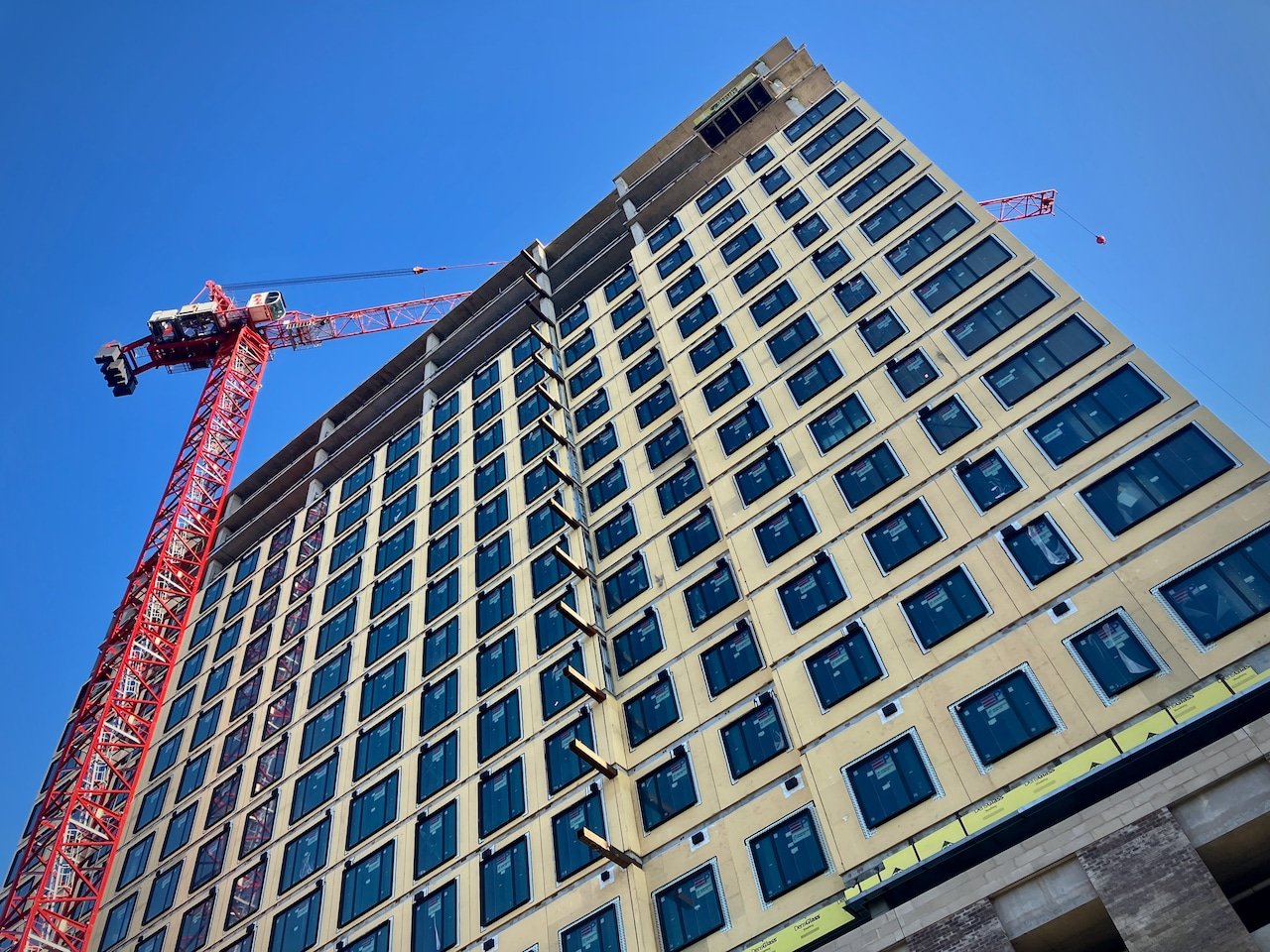ANN ARBOR, MI — A handful of big ideas have emerged as Ann Arbor plans for the city’s future growth.
One question under consideration: What if the city aimed to build new housing for about half of the workers who commute to Ann Arbor and their families, which could mean adding about 35,000 to 40,000 new households to the city?
To that end, should the city expand the downtown footprint where high density is allowed?
And should the city allow quadplexes to replace traditional homes in single-family neighborhoods throughout the city?
How about creating another center in the city, such as the Briarwood Mall area?
These are questions the city is investigating with the help of consultants helping to draft a new comprehensive land use plan expected to be adopted by the city council in 2025.
Stacey Chen, a consultant with Interface Studio, gave the municipality an update on the effort and new themes during a special work session on August 12.
“There are two main things that we think about in terms of growth scenarios, one is to create enough housing to stabilize prices, as affordability is one of the main pillars,” she said. “And the other is to create enough housing so that half or more of all commuters can live in the city.”
Ann Arbor high-rise roundup: Over a dozen new towers on the way
The city and consulting team have been engaging with residents over the past several months through online surveys, public workshops and other means.
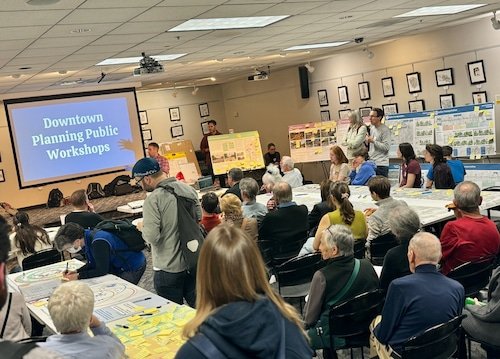
Dozens of community members attend a planning workshop in downtown Ann Arbor in the basement of the downtown library on March 12, 2024. (Ryan Stanton | MLive.com)Ryan Stanton | Ann Arbor News
A formal plan is expected to be drawn up this fall and finalized over the winter, with more public feedback before the council votes on adoption next spring.
Chen said her team and SmithGroup, another consultant on the project, have analyzed the public feedback so far. The issue of providing housing for half the people who commute into the city was just a starting point, and interestingly, she said, many people have said, why not think bigger.
Sustainability, equity and affordability are three overarching goals with “A2 for All” as a working vision, she said, but there is talk of adding a fourth societal value to the mix, and that could be toward celebrating what makes Ann Arbor unique. Ann Arbor.
It could play out in different ways, Chen said, noting that some people talk about it in terms of the character of the city, which can be something more physical — the look and feel of the city.
Two centuries later, Ann Arbor’s oldest neighborhood retains its charm
But some people talk about it in terms of the people who make up the city and the need for dynamic, fresh ideas and new people to constantly revitalize the city, Chen said.
“So this idea of a dynamic, vibrant Ann Arbor quality is something we’re exploring right now,” she said.
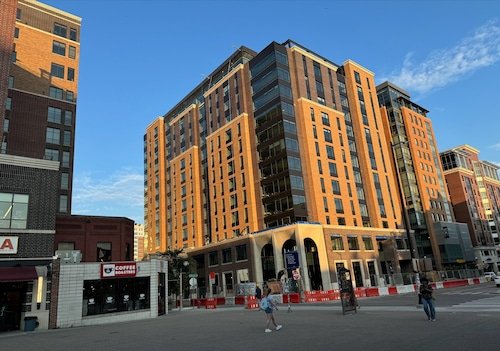
The 13-story Vic Village South high-rise nears completion on South University Avenue in Ann Arbor on July 11, 2024. (Ryan Stanton | MLive.com)Ryan Stanton | Ann Arbor News
The project team has been talking to residents about where Ann Arbor can build, understanding the city’s housing needs while balancing community values, said Chen, showing a map filled with green dots indicating people agree the city can build very up in neighborhoods everywhere. the city.
Residents seem to agree that more housing is needed, as well as different types, she said, noting that 75% of workshop participants supported more duplexes, triplexes and quadplexes in single-family neighborhoods.
The city is also exploring ways to blend more retail businesses into neighborhoods.
“There was also a sense that we need to connect these places, they need to be more walkable,” Chen said, adding that there is also interest in making the city’s riverfront more lively.
Preservation of historic districts and green spaces is another emerging theme, along with better public transportation and bike path improvements.
The city has in recent years rezoned major transit corridors to allow for future downtown-style development along them, although there has been no major development there yet. There is now talk of trying to maximize the housing in the commercial areas.
As for expanding the downtown footprint, there wasn’t a map showing what that might look like at the work session, but council members in the last year or so have already approved a handful of rezoning requests from developers to allow new high-rises in neighborhoods near downtown, including along Church Street, Forest Avenue and Packard Street.
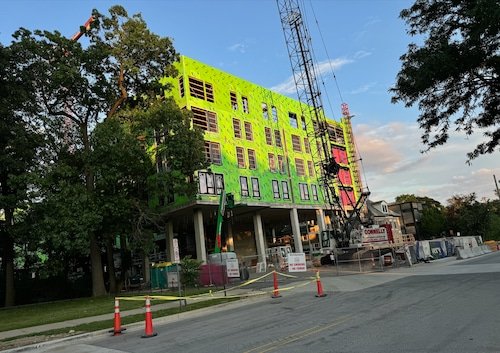
The start of a 12-story high-rise in progress at 721 S. Forest Ave. in Ann Arbor on July 11, 2024. (Ryan Stanton | MLive.com)Ryan Stanton | Ann Arbor News
Such areas, especially around the University of Michigan, could be more broadly rezoned for downtown-style development if council members go along with the idea.
As for allowing quadplexes in neighborhoods, Chen said it’s another way to support UM’s continued growth and would be good for economic development and tax revenue.
“It’s good for diversifying the housing types and also the people who could live here,” she said. “It could bring more businesses and services and provide a better quality of life.”
But if the city is going to add many more residents to neighborhoods, which likely means a lot more rentals, there is a need to ensure that public infrastructure investment and city services keep pace, while understanding that traffic congestion could get worse in the short term, Chen said.
In the long term, city officials hope that more people will switch to walking, cycling and using public transport.
If the city aims to create more density hubs similar to downtown, they could have a different flavor and be less student-centric, Chen said.
On the other hand, some people have said the city needs to be mindful of existing small businesses and the affordable commercial space that exists in some areas now, she said, and to be aware of what any changes could mean to downtown and the character of Ann Arbor.
All that feedback is expected to be used by the consultants to make recommendations to the city in the coming months.
They are also looking at ways to simplify and streamline the city’s development process and zoning of districts, allowing more flexibility while handling transitions between districts so the city can grow in a way that is sensitive to neighborhood context, Chen said.
Jen Eyer, one of the council members who wants to see a significant expansion of housing, said she is “absolutely thrilled” that 75% of workshop participants supported allowing up to four housing units on properties in single-family areas.
“It doesn’t really surprise me based on the conversations I have with people in the community,” she said.
The 4th Ward Democrat emphasized that the changes being talked about are not going to happen overnight.
Chen agreed, saying it will take time and that the project team is looking at a 2050 horizon and also looking at Ann Arbor’s propensity to change in terms of demographics.
Decline in families, black residents among concerns as Ann Arbor plans future
“There may be places in the city that feel like they’re changing quickly, but overall … it’s generally a slower process,” she said.
Planning Director Brett Lenart reiterated that since the city cleared the way for homeowners to add additional housing units on their properties in 2016, about 50 ADUs have been realized.
He expects it would be a similarly slow change with quadplexes, and they would be a relatively small part of the 40,000 new households being talked about.
“If we’re talking about enough housing development to stabilize prices, it’s not going to be accomplished in two- and four-unit neighborhoods,” he said.
“But I want to be clear, by doing that, there will be neighborhoods in the city that evolve over time,” he said. “And that’s okay. That’s how we got to where we are now.”
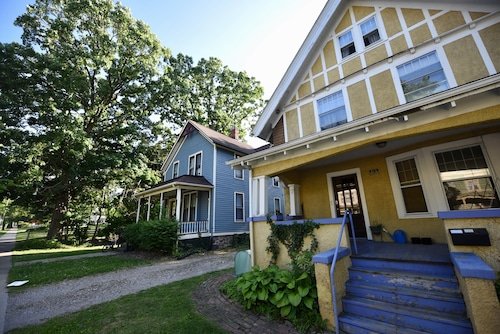
Old houses along Division Street in Ann Arbor’s Old Fourth Ward Historic District on June 10, 2024. (Ryan Stanton | MLive.com)Ryan Stanton | Ann Arbor News
Ann Arbor had a population of close to 124,000 residents as of the 2020 census, and more housing is continually being added, with more high-rises on the way. While a July 2023 census put the city’s population at under 120,000, Lenart noted that this is at a time of year when many UM students are gone and not an apples-to-apples comparison to the 2020s.
Councilman Travis Radina, D-3rd Ward, suggested the changes being talked about could play out differently in different neighborhoods.
For example, when there’s a duplex, many people might think of a two-family housing situation, but in near-campus neighborhoods, there might be 10-plus students in one unit, he said.
How can a University of Michigan student afford to live in Ann Arbor? They have 42 roommates.
Want more news from the Ann Arbor area? Bookmark local Ann Arbor news site or sign up for free “3@3 Ann Arbor” daily newsletter.
